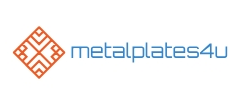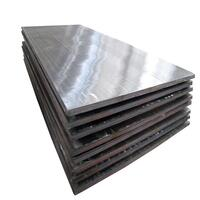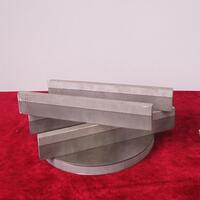1. Introduction
In the past 48 hours, architects and builders across North America have been buzzing about the rising popularity of sustainable metal facades in urban redevelopment projects—particularly the use of corten steel siding and zinc clad dormers in eco-conscious housing. This trend highlights a broader shift toward durable, low-maintenance, and visually striking exteriors, all made possible by advancements in metal clad technology. But what exactly is ‘metal clad,’ and why is it becoming a go-to choice for everything from residential homes to industrial infrastructure?

At its core, the metal clad meaning refers to a composite material where one metal is bonded—mechanically, metallurgically, or through electroplating—to another to combine the best properties of both. Whether it’s stainless clad aluminum for corrosion resistance or aluminum clad steel for strength and lightness, clad metals offer tailored performance without the high cost of solid specialty alloys. This guide dives deep into the world of metalclad applications, from construction to electrical systems and beyond.
2. Understanding Clad Metal Meaning and Types
The term ‘clad metal meaning’ describes a layered metal structure where a base metal (like carbon steel) is covered with a more corrosion-resistant or conductive metal (like copper, nickel, or titanium). This process can be achieved through roll bonding, explosion bonding, or electroplating methods such as chromium electroplating or electroless nickel coating. Common examples include aluminum clad stainless steel, stainless clad aluminum, titanium clad sheets, and copper nickel clad composites.
These materials are engineered for specific environments. For instance, 2024 T3 clad aluminum is widely used in aerospace for its strength-to-weight ratio, while 7075 T6 clad finds use in high-stress structural components. In industrial settings, alloy clad plates like Inconel 625 overlay or chrome carbide overlay are used to protect boiler plate steel and other high-wear surfaces.
3. Metal Clad in Construction: Walls, Roofs, and Facades

One of the most visible uses of metal clad today is in architecture. A metal clad building often features a metal clad wall system that doubles as both structure and aesthetic finish. Popular choices include corrugated steel facade panels, vertical standing seam metal siding, and corten steel facade elements that develop a rust-like patina over time—offering both beauty and durability.
Homeowners are increasingly opting for a metal clad house design, drawn to materials like zinc metal siding, copper siding, and Colorbond standing seam roofs. PAC Clad standing seam roof systems, along with PAC Clad coping and column covers, provide sleek, modern lines with minimal maintenance. Similarly, a zinc clad roof or zinc clad dormer adds elegance while resisting weathering for decades.
Other trending options include exterior corrugated metal siding for rustic-industrial appeal and steel clad exteriors using mild steel plate or corten steel plate. For those weighing cost, corten siding cost (or corten steel siding cost) typically ranges higher than standard steel but offers long-term savings due to its self-protecting oxide layer.
4. Industrial and Electrical Applications of Metal Clad
Beyond architecture, metal clad plays a critical role in engineering and electrical systems. Metal clad electrical wire—also called MC cable—features insulated conductors wrapped in an interlocked aluminum or steel armor. Aluminum clad wire, aluminum clad steel wire, and Cu clad wire are common variants used in commercial buildings, including in Pennsylvania, where code allows surface-mounted metal clad wiring under specific conditions.

In piping and insulation, aluminum clad pipe insulation protects against moisture and mechanical damage. Meanwhile, metal clad insulation is used in HVAC and industrial systems to maintain temperature and prevent condensation.
For structural components, thick steel plate, carbon steel plate, and stainless steel plate (including grades like 316L SS plate or 304L stainless steel plate) are often selected based on environment and load requirements. Diamond plate steel, aluminum diamond tread plate, and checker plate metal sheet offer slip resistance for walkways and vehicle decks.
5. Material Varieties and Market Availability
The market offers an extensive range of clad and solid metal plates and sheets. From 1/8 inch steel plate to 3/16 metal plate, and from 6061 T6 aluminum plate to Inconel 718 plate, availability depends on application needs. Stainless steel diamond plate, brass plates for engraving, and bronze plate price per kg vary by region and supplier.
Buyers often search for ‘steel plate near me’ or ‘aluminum sheet for sale’ when sourcing materials. Specialty products like perforated plate, metal plate with holes, or alloy checker plate serve niche functions in filtration, decoration, or safety. Meanwhile, clad variants like nickel brass clad copper or cupro nickel clad combine conductivity with corrosion resistance for marine and chemical applications.
6. Conclusion
Metal clad isn’t just a construction trend—it’s a smart engineering solution that merges performance, economy, and aesthetics. Whether you’re designing a steel clad house with a corten steel facade, specifying aluminum clad stainless steel for a chemical plant, or installing metal clad electrical wire in a commercial space, understanding the clad metal meaning and available options ensures better outcomes. As sustainable design and material efficiency continue to drive innovation, metalclad systems will remain at the forefront of modern building and manufacturing.
Our Website founded on October 17, 2012, is a high-tech enterprise committed to the research and development, production, processing, sales and technical services of ceramic relative materials such as What. Our products includes but not limited to Boron Carbide Ceramic Products, Boron Nitride Ceramic Products, Silicon Carbide Ceramic Products, Silicon Nitride Ceramic Products, Zirconium Dioxide Ceramic Products, etc. If you are interested, please feel free to contact us.
